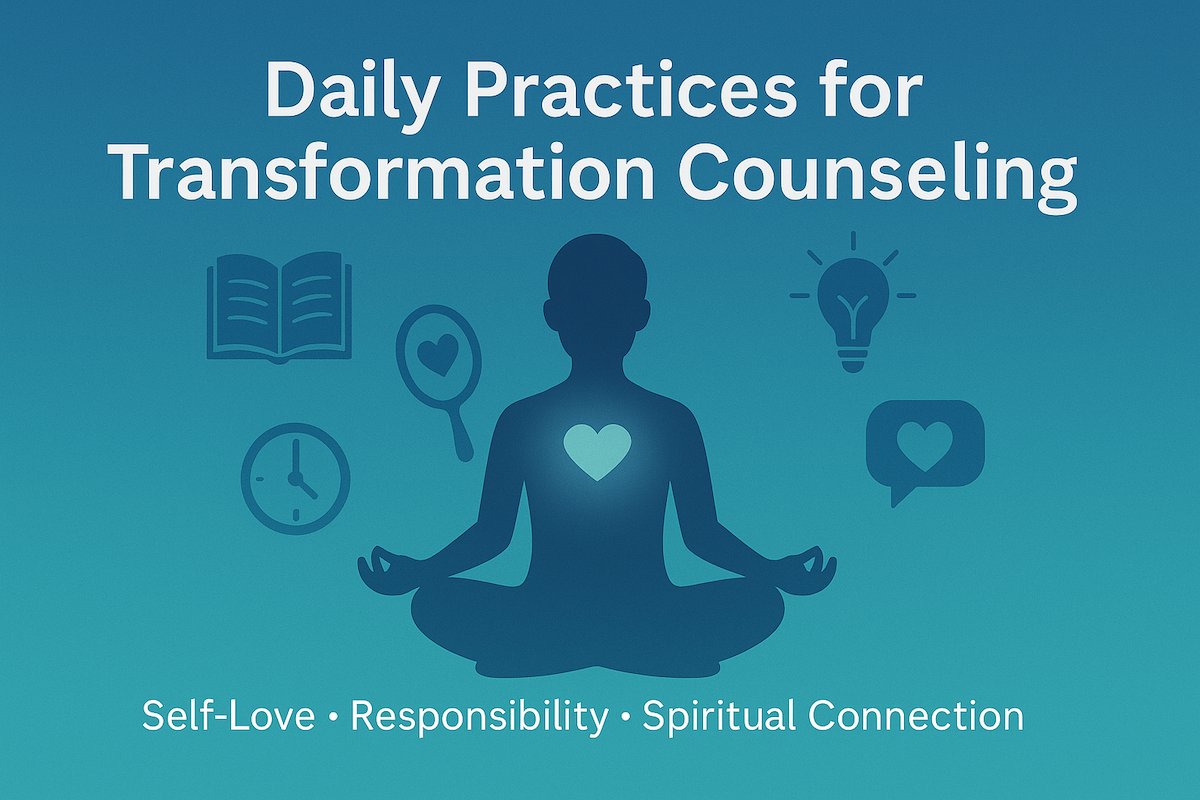Table of Contents
- The Subconscious Mind and Negative Programming
- The Role of Repetition in Creating Negative Patterns
- What Is Pattern Interruption?
- How Positive Affirmations Function as Pattern Interruption
- Why Affirmations Often Feel Fake at First
- How Affirmations Rewire the Subconscious Mind
- Practical Ways to Use Affirmations as Pattern Interruption
- From Negative to Positive: A Gradual Inner Shift
- A Simple Summary
Most people think of positive affirmations as hopeful little sentences—nice ideas we repeat to feel better. But when they are used consciously and consistently, positive affirmations become something far more powerful: a precise and intentional pattern interruption tool that can help rewire the subconscious mind from negative programming to positive, life-enhancing beliefs.
This article explores how that works: why negative patterns form, how pattern interruption operates, and how positive affirmations can be used as a practical method for transforming the inner conversation that shapes your life.
The Subconscious Mind and Negative Programming
The subconscious mind holds the deep beliefs, assumptions, and emotional impressions we’ve collected throughout life. Many of these were formed in childhood—through family dynamics, culture, school, religion, and early experiences of success or failure. Over time, these impressions become automatic patterns of thought and feeling.
Common self-limiting examples include:
- “I’m not good enough.”
- “Nothing ever works out for me.”
- “People always disappoint me.”
- “I’ll never change.”
- “I don’t deserve love or success.”
These are not just casual opinions. They become subconscious rules the mind uses to interpret reality. Once embedded, they filter what you notice and how you explain what happens to you. You begin to see the world through the lens of your existing beliefs. These existing beliefs become also known as a person’s self-limiting beliefs.
If you subconsciously believe, “I always fail,” your mind is primed to notice every setback as proof. Any success is minimized—“That was just luck”—while disappointments are magnified: “See? This is who I am.” The subconscious mind, in this way, is loyal to what it already believes, even if those beliefs are painful or limiting.
The Role of Repetition in Creating Negative Patterns
The subconscious mind learns primarily through repetition and emotional intensity. Negative patterns rarely come from a single experience; they emerge from the same message being delivered repeatedly, especially when charged with strong emotion.
- A child repeatedly criticized may internalize: “I’m not good enough.”
- A person constantly told, “You’re just like your father/mother,” may start believing they’re destined to repeat the same mistakes.
- Experiences of trauma, rejection, or failure may reinforce core beliefs of unworthiness or helplessness.
Each repetition deepens the neural pathways that support the thought. Eventually, these thoughts no longer feel like thoughts at all—they feel like truth.
This is where pattern interruption becomes essential.
What Is Pattern Interruption?
Pattern interruption is the deliberate act of breaking an automatic response and replacing it with something new. Every time you have a thought, feel an emotion, or react in a habitual way, you are running a pattern. Pattern interruption disrupts that pattern, creating a moment of choice and the possibility for change.
Here’s a simple example:
- Old pattern:
You make a mistake → immediate thought: “I’m so stupid” → feeling of shame. - Pattern interruption:
You notice the mistake → you catch the thought “I’m so stupid” starting to appear → you consciously stop and say, “I’m learning. It’s okay to make mistakes.”
That simple interruption, if repeated, begins to loosen the grip of the old belief and offers your subconscious mind a new, healthier message.
How Positive Affirmations Function as Pattern Interruption
Positive affirmations are short, intentional statements that express the truth of who you want to experience yourself as, rather than the negative pattern you may currently believe. Examples include:
- “I am worthy of love and respect.”
- “I am learning to trust myself.”
- “I am capable and resourceful.”
- “I deserve peace and happiness.”
- “I am willing to see myself differently.”
When used as a pattern interruption tool, affirmations are not just recited randomly; they are inserted at the moment the old pattern tries to take over.
For example:
- Old thought: “I’ll never change.”
Pattern interruption affirmation: “Every day I am changing and growing. I am capable of transformation.” - Old thought: “I’m such a failure.”
Pattern interruption affirmation: “I am learning from every experience. I am more capable than I realize.”
In these moments, the affirmation breaks the automatic loop. Instead of letting the negative belief run unchecked, you consciously intervene and offer a new script for the subconscious mind.
Why Affirmations Often Feel Fake at First
Many people try affirmations and quickly say, “This doesn’t work—it feels fake.” That reaction is actually a sign that the old pattern is still dominant. The subconscious mind is used to the negative message; the positive statement feels unfamiliar, even threatening, to the old identity.
Consider this:
- You’ve repeated “I’m not good enough” (directly or indirectly) thousands of times.
- You’ve repeated “I am worthy and lovable” only a handful of times—if at all.
Of course, the new affirmation feels strange in comparison. It’s not proof that affirmations don’t work; it’s proof that the old programming has been heavily rehearsed. The purpose of the affirmation is not to reflect your current emotional state; it is to plant a seed and begin building a new pattern.
Pattern interruption always feels uncomfortable. You’re stepping out of what is known—no matter how painful—and into something new. That discomfort is actually part of the process of change.
How Affirmations Rewire the Subconscious Mind
Affirmations used as pattern interruptors support change in several key ways:
- They Redirect Attention
The subconscious is deeply influenced by where you place your attention. Negative patterns pull your attention toward fear, doubt, and self-criticism. When you deliberately use an affirmation, you shift your focus toward possibility, worthiness, and self-respect.
This redirection of attention is itself a pattern interruption: instead of feeding the negative thought with more energy, you feed the new, positive thought.
- They Change the Emotional Atmosphere
Thoughts and emotions are tightly linked. Negative thoughts generate feelings of shame, fear, hopelessness, and anger. Positive affirmations, when repeated with even a small amount of openness, can evoke feelings like hope, calm, curiosity, or relief.
At first, the emotional shift may be subtle. You might not go from despair to joy, but you might move from despair to a small sense of, “Maybe there’s a chance I’m not as hopeless as I think.” That slight shift matters. It’s part of interrupting the emotional pattern that supports the old belief.
- They Build New Neural Pathways Through Repetition
Just as negative beliefs were installed through repetition, affirmations create new pathways through repeated use. Each time you choose the affirmation instead of the old thought, you strengthen the new pathway and weaken the old one.
Over time:
- The old thought arises less frequently.
- When it does arise, it feels less convincing.
- The new thought (“I am capable,” “I am worthy,” “I am learning”) begins to feel more natural and believable.
The subconscious mind gradually adopts the new statement as a more accurate description of who you are.
- They Reinforce Personal Responsibility and Choice
Affirmations used in this way are not passive. You are not waiting to “magically feel better.” You are choosing in each moment how you respond to your inner world. Every time you interrupt a negative thought and replace it with an affirmation, you are practicing responsibility for your inner experience.
This sense of agency—“I can choose a new response”—is itself transformative. It shifts you from being a victim of your thoughts to being the author of them.
Practical Ways to Use Affirmations as Pattern Interruption
To make this process real and effective, it helps to use affirmations strategically rather than randomly.
- Identify Your Core Negative Patterns
Start by noticing the specific negative thoughts that show up most often. Common examples include:
- “I’m not enough.”
- “I always fail.”
- “Things never work out for me.”
- “I don’t deserve good things.”
- “I’ll never change.”
Write them down. Awareness is the first step in interrupting any pattern.
- Create Targeted Affirmations
For each negative pattern, create one or two affirmations that directly counter it, but still feel somewhat reachable or believable.
Examples:
- Negative: “I’m not enough.”
Affirmation: “I am enough, and I am learning to see my worth.” - Negative: “I always fail.”
Affirmation: “I am capable, and I learn and grow from every experience.” - Negative: “I don’t deserve love.”
Affirmation: “I am worthy of love, kindness, and respect.” - Negative: “I’ll never change.”
Affirmation: “I am changing every day. I am open to transformation.”
- Use Affirmations in Real Time
Affirmations are most powerful when used in the moment you notice the old pattern starting to run. For example:
- You feel self-criticism rising after a mistake.
→ Pause. Breathe. Speak your affirmation out loud or silently. - You catch yourself spiraling into hopelessness.
→ Pause. Interrupt the thought. Use an affirmation that supports hope and possibility.
This real-time application is the heart of pattern interruption.
- Practice Daily Repetition
In addition to using affirmations in the moment, build a daily practice:
- Say your affirmations in the morning and before sleep.
- Write them in a journal.
- Place them where you’ll see them: on a mirror, phone screen, or desk.
- Speak them out loud with as much feeling as you can honestly access.
This regular repetition supports the rewiring process, even when you are not actively confronting a negative pattern.
- Bring Compassion to Resistance
When you notice resistance—“This feels silly,” “This isn’t true,” “This is a waste of time”—recognize that as part of the old pattern defending itself. Instead of fighting the resistance, meet it with compassion:
- “It’s okay that this feels uncomfortable. I am still choosing these new thoughts.”
- “I’m allowed to learn a new way of seeing myself.”
Compassion itself is a powerful pattern interrupter for shame and self-judgment.
From Negative to Positive: A Gradual Inner Shift
Using positive affirmations as pattern interruption is not about pretending you never have negative thoughts or painful emotions again. It is about changing your relationship with those thoughts and feelings.
Over time, as you consistently interrupt negative patterns and replace them with positive, supportive statements, several shifts occur:
- You believe your negative thoughts less.
- You recover more quickly from emotional triggers.
- You begin to see yourself as capable, worthy, and growing.
- You feel more aligned with a deeper truth about who you really are.
The subconscious mind slowly lets go of old, harsh judgments and adopts a kinder, more empowering narrative. The affirmations that once felt awkward or fake begin to feel natural and true.
A Simple Summary
Positive affirmations, when used with intention and consistency, are not “magic words.” They are tools for pattern interruption. Each time you catch a negative thought and choose a positive affirmation instead, you disrupt the old programming and offer your subconscious mind a new, healing message.
With patience, repetition, and compassion for yourself, these small interruptions accumulate into real change. The mind that once automatically repeated, “I’m not good enough,” can learn to say, “I am worthy, I am growing, and my life can be different.”
That is the quiet, powerful work of affirmations: step by step, thought by thought, they help you re-create the inner world from which all outer change begins.
Dr. Harry Henshaw
Port Charlotte, Florida

Get Free from Addiction!
Discover a groundbreaking perspective on addiction recovery. Click below to buy Prelude to a Paradigm Shift for Addiction and explore innovative solutions to transform the way we understand and treat substance use disorders.
About Enhanced Healing
Enhanced Healing Counseling specializes in addiction recovery, mental health, and self-esteem support. Offering online and in-person services, we empower individuals to transform their lives with personalized care and proven therapeutic methods.



